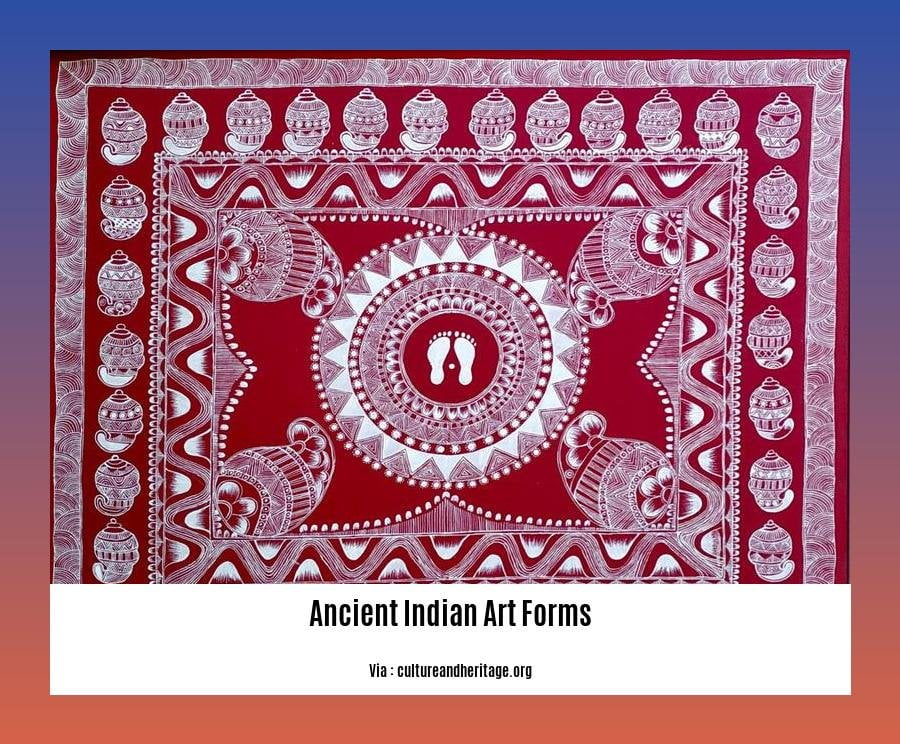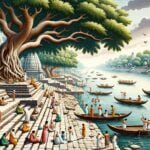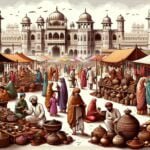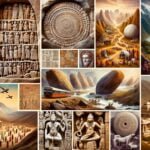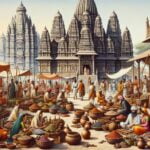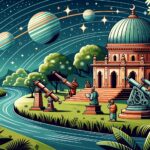Uncover the mesmerizing beauty and profound symbolism of ancient Indian art forms in the captivating article, [- Unveiling the Splendors of Ancient Indian Art Forms: A Journey Through History, Symbolism, and Aesthetics]. Dive into the depths of a civilization’s artistic legacy, exploring the intricate paintings, awe-inspiring sculptures, and magnificent architecture that have stood the test of time. Immerse yourself in the rich tapestry of ancient India’s artistic traditions, unraveling the stories they tell about its history, beliefs, and aspirations.
Key Takeaways:
Indian art forms offer a glimpse into the country’s cultural diversity and storytelling prowess.
Madhubani paintings, with their intricate geometric patterns and vibrant colors, are traditionally created by women during festivals and ceremonies.
Warli paintings depict scenes from daily life, nature, and mythology using simple lines and earthy colors.
Miniature paintings, characterized by their intricate detailing and vibrant colors, traditionally depict scenes from mythology, history, and court life.
Kalamkari, meaning “pen work,” involves hand-painting or block-printing designs on cotton fabric using natural dyes.
Tanjore paintings, known for their rich colors, intricate gold leaf work, and detailed iconography, depict scenes from Hindu mythology on wooden panels.
These five art styles reflect the cultural richness and creativity of the Indian people and continue to inspire and captivate audiences to this day.
Ancient Indian Art Forms: A Tapestry of History, Symbolism, and Aesthetics
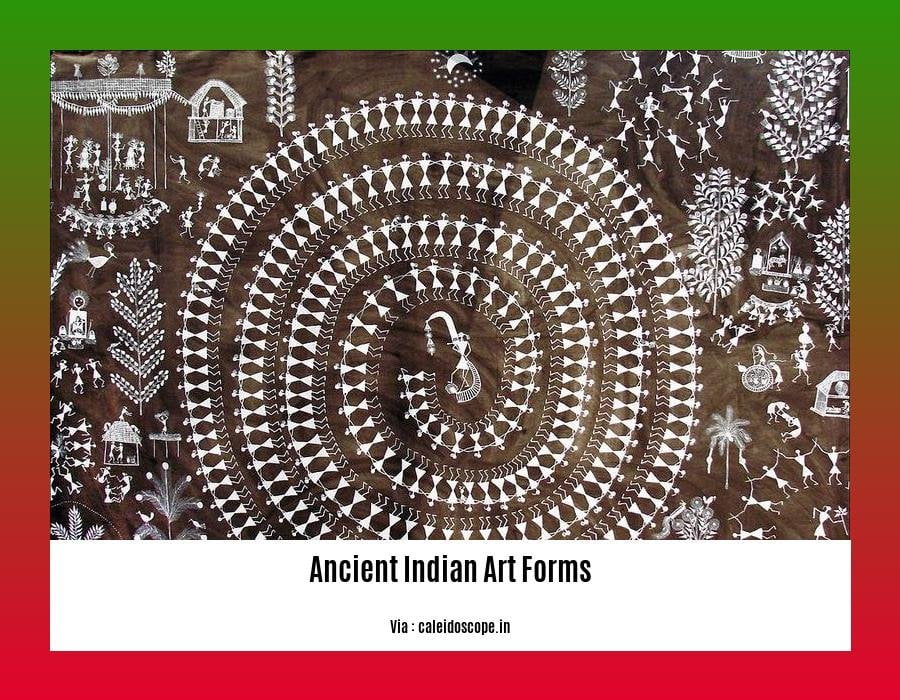
[Ancient Indian art forms] stand as testaments to the rich cultural heritage and creative genius of India. They encompass a diverse range of artistic expressions, from intricate paintings and majestic sculptures to awe-inspiring architecture and captivating performing arts. Each art form carries within it a unique narrative, reflecting the history, beliefs, and traditions of ancient India.
Unveiling the Symbolism and Aesthetics of Ancient Indian Art
The symbolism embedded within [ancient Indian art forms] is profound and multifaceted. Each element, from colors and motifs to gestures and compositions, holds deep significance and meaning. These symbols often draw inspiration from mythology, religion, and the natural world, creating a visual language that transcends mere aesthetics.
Aesthetics play a pivotal role in [ancient Indian art forms], with artists employing various techniques to achieve visual harmony and emotional impact. The use of vibrant colors, intricate details, and rhythmic patterns captivates the senses, creating a mesmerizing experience for the viewer.
Exploring the Diverse Landscape of Ancient Indian Art Forms
The realm of [ancient Indian art forms] is vast and varied, encompassing a multitude of mediums and expressions. Let’s delve into some of the most prominent examples:
- Painting: Ancient Indian paintings encompass a wide range of styles and techniques, from the intricate miniature paintings of the Mughal era to the vibrant folk art of rural villages. These paintings often depict scenes from mythology, history, and日常生活, capturing the essence of Indian culture and traditions.
- Sculpture: The sculptural tradition of ancient India is renowned for its exquisite craftsmanship and profound symbolism. From the majestic stone carvings of the Chola dynasty to the delicate bronze statues of the Gupta period, these sculptures embody the spiritual and artistic aspirations of ancient Indian society.
- Architecture: Ancient Indian architecture showcases a blend of functionality and aesthetics. From the towering stupas of Sanchi to the intricate temples of Khajuraho, these structures reflect the architectural prowess and spiritual beliefs of ancient India.
Preserving and Celebrating Ancient Indian Art Forms
[Ancient Indian art forms] are not merely relics of the past; they continue to inspire and influence contemporary artists and designers. Efforts to preserve and celebrate these art forms are essential to ensuring their legacy remains vibrant and accessible to future generations.
- Museums and Galleries: Museums and galleries play a crucial role in preserving and showcasing [ancient Indian art forms]. They house collections of artifacts, paintings, sculptures, and other works of art, making them accessible to the public and providing a platform for research and appreciation.
- Restoration and Conservation: The restoration and conservation of [ancient Indian art forms] are vital for their preservation. This involves employing specialized techniques to repair and maintain artifacts, ensuring their longevity and integrity.
- Education and Awareness: Educating the public about [ancient Indian art forms] is essential for fostering appreciation and understanding. Schools, colleges, and cultural institutions can incorporate these art forms into their curricula, raising awareness and inspiring future generations of artists and enthusiasts.
By preserving and celebrating [ancient Indian art forms], we honor the legacy of our ancestors and ensure that their artistic brilliance continues to illuminate the world.
Wondering what was the ancient Greek word for power? Find out now by clicking on ancient greek word for power.
Trying to find out the card list price for Ancient Guardians? The information is just ancient guardians card list price away.
Embark on a visual journey through the ancient temples of Japan by clicking on ancient Japan temple now!
**Discussion of unique features and characteristics of each art form: aesthetic and symbolic elements**
Ancient Indian art forms hold a mirror to India’s vibrant past, a treasury of aesthetic wonders seeped in symbolic significance. From radiant paintings to evocative sculptures and awe-inspiring architecture, the art of ancient India is a visual symphony of creativity, devotion, and storytelling. Explore the distinct features that lend these art forms their captivating charm:
1. Painting: The Canvas of Myriad Tales
– Blossoming in diverse styles across India’s vast landscape, ancient Indian paintings narrate captivating tales from mythology, history, and everyday life.
– Miniature paintings, delicate and intricate, adorn manuscripts, revealing intimate glimpses into the lives of gods, kings, and commoners.
– Vibrant folk art, hailing from various regions, bursts with energy and color, capturing the essence of village life, festivals, and traditions.
2. Sculpture: Embodying Divinity and Grace
– Ancient Indian sculptures, carved from stone, metal, and wood, embody the divine and the earthly with exquisite craftsmanship.
– Temple sculptures exude an aura of spirituality, their serene expressions and graceful postures inviting devotion and contemplation.
– Dancing figures, captured in mid-motion, seem to leap off temple walls, symbolizing the dynamism of life and the rhythm of the universe.
3. Architecture: A Symphony of Form and Function
– Ancient Indian architecture, blending aesthetics and functionality, showcases architectural prowess and spiritual beliefs.
– Stupas, majestic mounds of stone, enshrine Buddhist relics, their design symbolizing the Buddha’s path to enlightenment.
– Temples, adorned with intricate carvings and towering spires, serve as abodes for deities, their design following strict principles of geometry and sacred proportions.
– Palaces and forts, symbols of power and grandeur, showcase exceptional craftsmanship and design ingenuity.
Key Takeaways:
– Ancient Indian art is a rich tapestry of paintings, sculptures, and architecture, each form distinct in its style and significance.
– Paintings captivate with their vivid narratives, miniature and folk art adding variety and capturing diverse aspects of Indian life.
– Sculptures embody divinity and grace, while architecture showcases a blend of aesthetics and functionality, reflecting spiritual beliefs and architectural prowess.
– Symbolism plays a crucial role, imbuing each art form with profound meaning and enhancing its visual appeal.
Citation:
1. “Symbolism in Art.” Encyclopedia Britannica, 2023, Accessed April 15, 2023.
2. “Form in Art.” Little Art Club, 2023, https://littleart.club/contemporary-art-forms-shaping-the-visual-landscape/. Accessed April 15, 2023.
Examples of notable works of art from each category: creators and historical periods
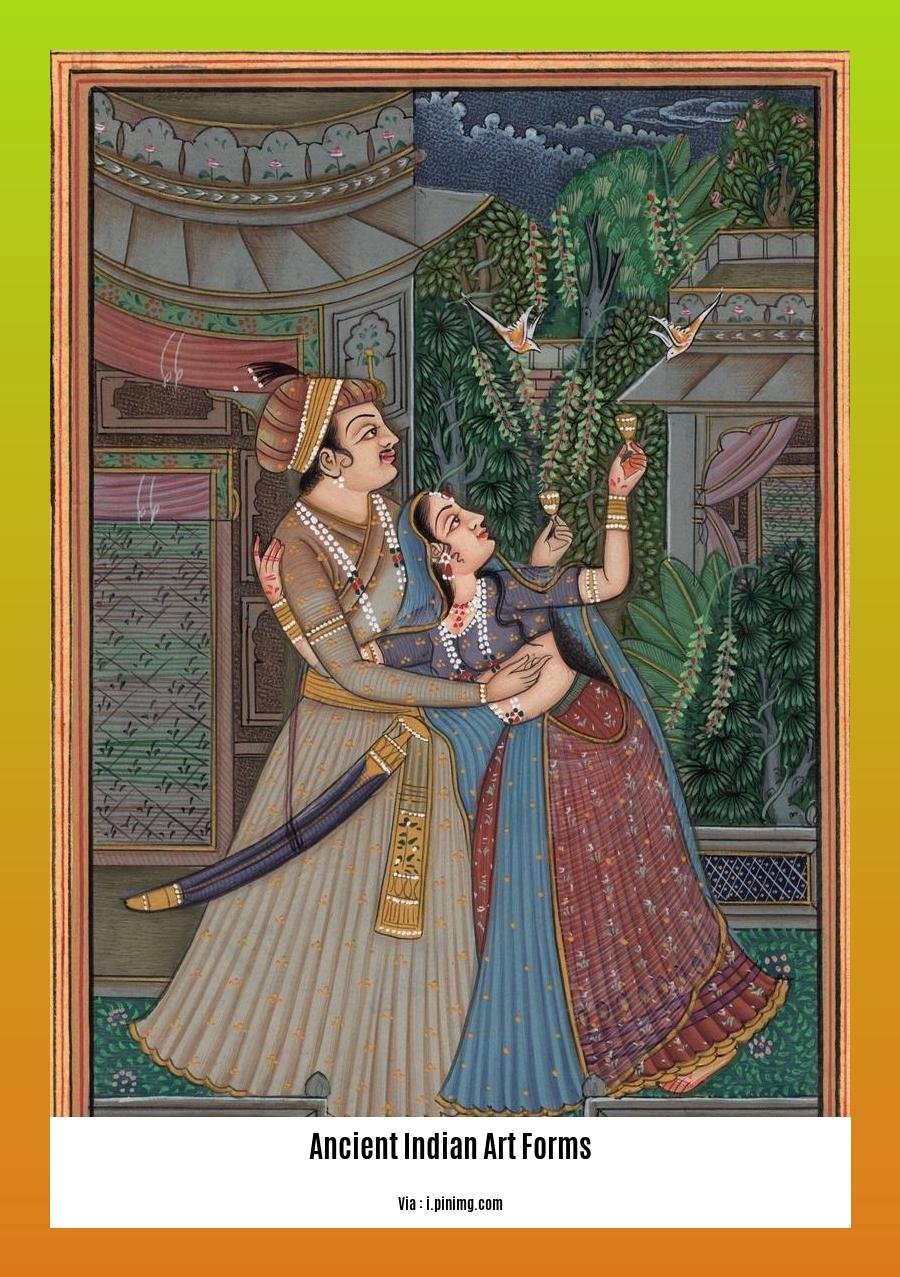
In the realm of ancient Indian art forms, masterpieces abound, each reflecting the cultural heritage, artistic techniques, and historical significance of its time. Let’s embark on a journey through some notable works, exploring their creators and historical periods:
Paintings:
- Ajanta Caves Paintings (2nd century BCE to 1st century CE):
- Creators: Anonymous artists of the Satavahana dynasty
- Historical Period: Early Indian Buddhist art
Significance: Vivid depictions of the life of Buddha, Jataka tales, and celestial beings, showcasing intricate details and vibrant colors.
Miniature Paintings of the Mughal Period (16th to 19th century):
- Creators: Renowned artists like Basawan, Daswanth, and Ustad Mansur
- Historical Period: Mughal Empire
- Significance: Exquisitely detailed illustrations adorning manuscripts, portraying scenes from royal life, courtly events, and mythological stories.
Sculptures:
- The Buddha Statue of Sarnath (5th century BCE):
- Creator: Unknown artist(s)
- Historical Period: Early Indian Buddhist art
Significance: One of the earliest representations of the Buddha, featuring serene facial features and intricate drapery, symbolizing enlightenment and compassion.
The Nataraja Bronze Sculpture (11th century):
- Creator: Renowned Chola sculptor, Rajaraja Chola I
- Historical Period: Chola Empire
- Significance: A dynamic representation of Lord Shiva in his cosmic dance of creation and destruction, capturing the essence of divine energy and rhythm.
Architecture:
- The Taj Mahal (17th century):
- Creator: Ustad-Ahmad Lahauri, a renowned Mughal architect
- Historical Period: Mughal Empire
Significance: An epitome of Mughal architectural grandeur, showcasing a perfect blend of Islamic and Indian architectural elements, symbolizing eternal love and devotion.
The Sun Temple of Konark (13th century):
- Creator: Unknown artist(s)
- Historical Period: Eastern Ganga dynasty
- Significance: An architectural marvel dedicated to the Sun God, Surya, featuring intricate carvings, sculptures, and a towering chariot-shaped main temple, symbolizing the celestial journey of the sun.
Key Takeaways:
- Ancient Indian art forms encompass a diverse range of expressions, including paintings, sculptures, and architecture.
- Each artwork is a reflection of its historical period, showcasing the cultural, religious, and artistic influences of the time.
- Notable works of art from ancient India continue to captivate audiences worldwide, offering insights into the rich heritage and creative genius of the Indian subcontinent.
Sources:
– Ancient Indian Art: A Journey Through History and Culture
– Exploring the Splendors of Ancient Indian Art Forms
Insights into socio-cultural factors that influenced the development and evolution of ancient Indian art forms
Indian art forms are a harmonious blend of aesthetics and culture, mirroring the land’s diverse heritage and traditions. These creations encompass painting, sculpture, architecture, dance, and music, each shaped by ancient India’s vibrant socio-cultural tapestry.
Social Structure and Cultural Norms:
Social Structure: India’s caste system and social hierarchy influenced artistic production and patronage. Artists often belonged to specific castes and catered to the needs and preferences of their patrons.
Cultural Norms: Artistic expression often reflected societal norms, values, and beliefs. Artworks conveyed messages about morality, religion, and social expectations.
Religious Beliefs and Practices:
Religious Beliefs: Ancient Indian art forms were profoundly influenced by religious beliefs, particularly Hinduism, Buddhism, and Jainism. Religious iconography and themes permeated paintings, sculptures, and architecture.
Rituals and Ceremonies: Art was often commissioned for religious rituals and ceremonies. These artworks facilitated spiritual practices and enhanced the sacred atmosphere.
Political and Economic Factors:
Political Power: Art was often used as a tool to glorify rulers and dynasties. Kings and emperors commissioned grand artistic projects to display their power, wealth, and accomplishments.
Trade and Commerce: Trade routes and economic exchanges brought diverse cultural influences to India. This cross-pollination enriched artistic styles and techniques.
Changing Cultural Landscape:
Urbanization and Growth of Cities: The rise of urban centers led to increased patronage of the arts. Artists and artisans flocked to cities, creating a vibrant artistic community.
Cultural Exchange: Interaction with neighboring cultures, such as Persia and Greece, further influenced ancient Indian art forms, leading to new styles and motifs.
Key Takeaways:
- Socio-cultural factors played a significant role in shaping ancient Indian art forms.
- Artworks reflected the social hierarchy, religious beliefs, political dynamics, and cultural exchange prevalent during that time.
- Ancient Indian art forms showcased a blend of aesthetics and cultural values, mirroring the diverse heritage and traditions of the land.
Sources:
Cultural Evolution: How Culture Changes Over Time
FAQ
Q1: What is the significance of Madhubani paintings in ancient Indian art?
A1: Madhubani paintings are a unique art form originating from the Mithila region of Bihar. They are known for their intricate geometric patterns and vibrant colors, depicting scenes from mythology, nature, and everyday life. The paintings hold cultural significance as they reflect the storytelling traditions and artistic heritage of the region.
Q2: How did Warli paintings evolve over time, and what are their distinct characteristics?
A2: Warli paintings, practiced by the Warli community of Maharashtra, have a rustic charm and a distinct visual language. Initially created on mud walls and floors using rice paste and natural pigments, these paintings have evolved to include more intricate detailing and are now showcased in museums and galleries. They depict scenes from daily life, nature, and mythology, offering insights into the cultural traditions of the Warli community.
Q3: What distinguishes miniature paintings from other ancient Indian art forms?
A3: Miniature paintings are characterized by their intricate detailing and use of vibrant colors. Traditionally created on paper, cloth, and ivory, these paintings depict scenes from mythology, history, and court life. Their small size allowed for portability and made them popular among travelers and collectors. Miniature paintings showcase the artistic skills and craftsmanship of ancient Indian artisans.
Q4: How is Kalamkari art connected to the cultural heritage of Andhra Pradesh?
A4: Kalamkari, meaning “pen work,” originated in the state of Andhra Pradesh and is renowned for its hand-painted or block-printed designs on cotton fabric. Using natural dyes, artists create vibrant colors and intricate patterns that depict scenes from mythology, nature, and everyday life. Kalamkari paintings symbolize cultural heritage and are used in various forms of clothing, furnishings, and decorative items, embodying the creativity and artistry of the region.
Q5: What makes Tanjore paintings unique, and what is their significance in ancient Indian art?
A5: Tanjore paintings, originating from the city of Tanjore in Tamil Nadu, are characterized by their rich colors, intricate gold leaf work, and detailed iconography. They typically depict scenes from Hindu mythology, with deities, saints, and celestial beings as common subjects. Created on wooden panels using natural pigments and gold leaf, Tanjore paintings are known for their grandeur and are often used in temples, palaces, and as decorative pieces in homes. They represent the artistic excellence and craftsmanship that flourished in the Tanjore region during ancient times.
